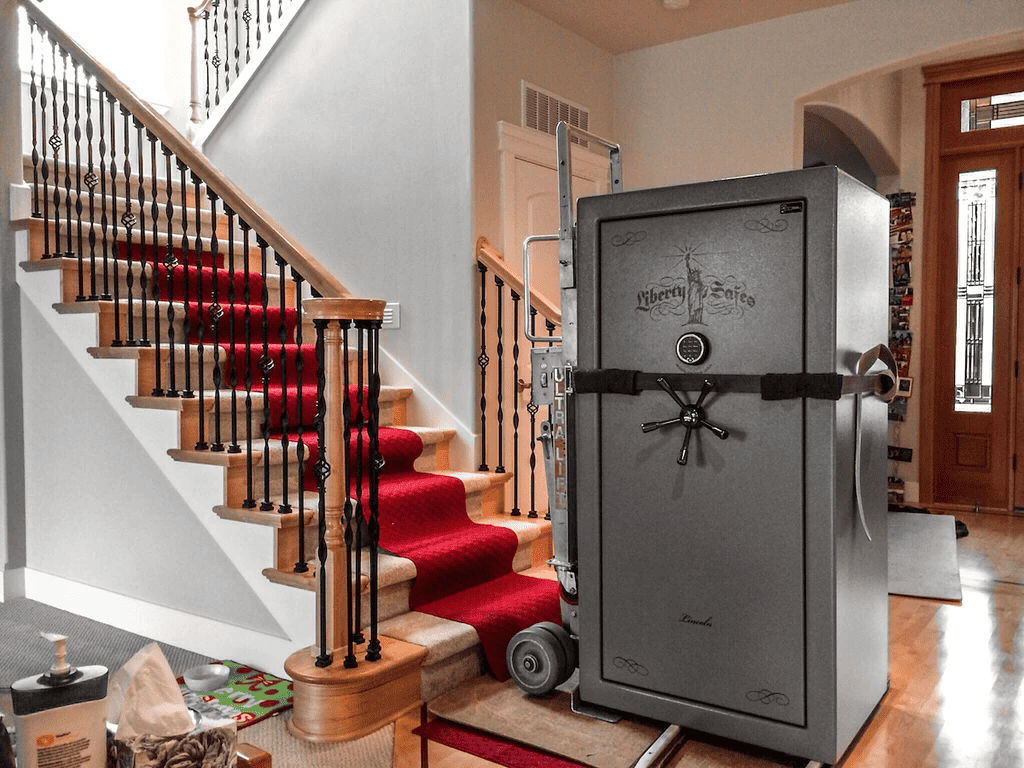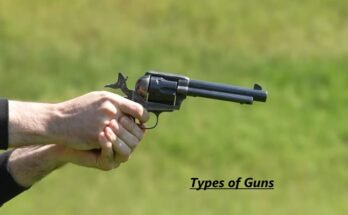Thinking about placing your gun safe in the basement? It can be a smart move—basements tend to be out of sight, offer a stable temperature, and add an extra layer of security. But before you start hauling that heavy safe downstairs, there are a few important things to keep in mind.
First, make sure the spot you choose is completely dry. Moisture can lead to rust and corrosion, which can damage both the safe and your firearms. A secure, level foundation is also key—not just to support the weight of the safe, but to keep it from tipping or shifting over time.
For added protection, it’s a good idea to bolt the safe to the floor, and don’t hesitate to bring in professional help for the heavy lifting. You’ll also want to check your local laws to ensure you’re staying compliant with storage regulations. And while security is crucial, make sure the safe is still accessible in case of an emergency. Keeping humidity levels in check will go a long way in preserving your safe and its contents for years to come.

Assessing Your Basement
Choosing to store a gun safe in the basement requires careful consideration. Planning is key. The basement is often an ideal location due to its seclusion and structural support. But, must assess the basement properly for a gun safe. This ensures safety and accessibility over time. Now, let’s explore what assessing your basement involves.
Evaluating Space And Location
Space is crucial for a gun safe’s placement. Start by measuring the area. A gun safe needs ample room. You should avoid tight spaces. Room to open the safe door fully is needed. Also, think about the safe’s weight. Can your basement floor support it? Check for easy access. This might affect emergency situations. Ensure clear pathways. Avoid clutter around the safe. Lastly, think about future changes. Can you add more safes without hassle?
Moisture And Climate Considerations
Basements can be damp. Moisture is a risk to firearms. Use a hygrometer to measure humidity levels. Safe levels range from 30 to 50 percent. Look for signs of water damage. These include stains, mold or mildew. Consider installing a dehumidifier. This protects guns from rust. Good air circulation is important. Make sure vents or HVAC systems are nearby.
Understanding climate is vital. Basements usually stay cool. This can prevent overheating in summer. But, cold winters might increase moisture. Insulation could help. Use climate-controlled solutions if needed. Think about potential flooding too. If it’s a risk, elevate the safe. You can use concrete blocks for this. Safety is all about prevention.
Choosing The Right Gun Safe
Finding the perfect gun safe for your basement requires careful consideration. Important factors include size, security, and protection against fire and water. This guide helps simplify your decision.
Size And Storage Capacity
Measure the space in your basement where you plan to place the safe. Gun safes come in varied sizes. Consider future purchases when deciding on size.
A table to compare popular gun safe sizes:
| Size | Dimensions | Gun Capacity |
|---|---|---|
| Compact | 20″H x 17″W x 20″D | 1-2 Rifles |
| Medium | 60″H x 24″W x 22″D | Up to 24 Rifles |
| Large | 72″H x 42″W x 28″D | 30+ Rifles |
Security Features
Lock types matter. Choose between electronic, mechanical, or biometric locks. Each has its benefits. Opt for one that suits your access preferences.
- Electronic locks provide quick access.
- Mechanical locks are reliable without power.
- Biometric locks need your fingerprint to open.
Look for heavy-duty bolts and anti-drill plates. These prevent unauthorized entry.
Fire And Water Protection
Basements can flood and fires reach every corner of a home. Your guns need protection from both. Seek safes with certified fire ratings. This means the safe can withstand high temperatures for a certain period.
Water-resistance is also critical. Tight seals and solid construction keep moisture out. Make sure you choose a safe that offers both features.
Preparation For Installation
Getting your basement ready for a gun safe involves a few key steps. You’ll need to gather the right tools and create a clear path. Follow this guide to ensure your gun safe is installed safely and securely. Let’s avoid any hiccups by preparing properly.
Gathering Necessary Tools
Before installing your gun safe, make sure you have all the tools on hand. This includes items such as:
- Measuring tape to determine the size of the area,
- A dolly or hand truck strong enough to hold the safe,
- Drill with concrete bits for securing the safe,
- Level to ensure your safe is perfectly horizontal,
- Wrenches and Socket sets for any bolts or nuts,
- Gloves to protect your hands during the move.
Creating A Clear Path
A clear path is crucial for moving your safe into the basement safely. Start by:
- Measuring doorways and stairwells to ensure the safe can pass through,
- Removing any obstacles or furniture in the way,
- Protecting the floor with plywood or mats to prevent damage,
- Confirming the route is free of moisture or slippery areas,
- Securing loose rugs or wires that could cause trips.
Once you’ve secured the necessary tools and created a clear path, you are set for a smooth installation. These careful preparations help to avoid damage to your home or injury to yourself. A successful installation starts with meticulous planning.
Safe Transportation Downstairs
When positioning a gun safe in your home, the basement often emerges as a top choice, offering both solidity and seclusion. However, moving a heavy safe downstairs is nothing short of an odyssey, necessitating both ample preparation and safety precautions. Let’s delve into the critical steps for the safe transportation downstairs, breaking down the process into manageable stages.
Safety Measures For Heavy Lifting
Ensuring safety throughout the move is non-negotiable. Begin with the basics:
- Wear protective gear: Gloves and sturdy footwear are must-haves.
- Assess the path: Clear obstructions and secure loose flooring.
- Communicate: Team lifting requires synchronized actions.
Always apply proper lifting techniques:
- Bend at the knees, not the waist.
- Keep the safe close to your body as you lift.
- Avoid twisting your back. Move your feet to turn.
Consider using mechanical assistance such as a dolly or hand truck, particularly designed for heavy lifting and safe navigation on stairs.
Methods For Moving The Safe
Different approaches may be suited to your moving scenario:
- Manual Team Lift: A group effort with clear leaders directing the move.
- Stair Climbing Dolly: Specialized equipment ideal for vertical transit.
Here’s a table that offers a snapshot of the methods:
| Method | Pros | Cons |
|---|---|---|
| Manual Team Lift | Flexibility, cost-effective | Physical strain, injury risk |
| Stair Climbing Dolly | Ease of use, reduces strain | Cost of rental/purchase |
Break down larger safes, removing doors or shelves if possible, to lighten the load. Secure the safe well, especially if using a dolly or similar equipment.
Securing The Safe
A gun safe in your basement adds a layer of security to your home. But positioning alone won’t do. You must secure your safe properly.
Anchoring to the FloorAnchoring To The Floor
Proper anchoring keeps your safe immovable, thwarting burglars’ attempts to remove it. Here’s how:
- Find solid ground. Concrete is best for a strong hold.
- Position your safe where you want it.
- Mark drill points using the safe’s pre-drilled holes.
- Remove the safe and drill into the concrete.
- Place the safe back and insert anchor bolts.
- Tighten the bolts for a snug fit.
Hidden Vs. Visible Placement
The debate between a hidden safe and one in plain sight is crucial for your safety strategy. Consider both sides:
| Hidden Safes | Visible Safes |
|---|---|
| Difficult for intruders to find | Easy access for you in emergencies |
| Requires creative concealment solutions | Serves as a visual deterrent |
| Might be overlooked during break-ins | Requires robust anchoring due to visibility |
Both choices have merits. Your decision depends on your security preferences.

Maintaining Optimal Conditions
Maintaining optimal conditions for your gun safe in the basement prevents damage to your firearms and ensures they are ready when needed. Basements are prone to dampness, which can lead to rust and deterioration of your stored valuables. Let’s explore the practical steps to keep your gun safe dry and secure in such conditions.
Controlling Humidity
Keeping humidity at bay is crucial for a basement gun safe. Elevated moisture levels can cause metals to corrode. To combat this, use dehumidifiers and maintain consistent air flow. Here are effective ways to manage humidity:
- Dehumidifiers: Electronic or desiccant dehumidifiers keep air dry.
- Silica Gel Packs: Place inside the safe for moisture absorption.
- Hygrometer: Track humidity levels regularly. Aim for 30-50% RH.
Regular Maintenance Checks
Performing regular checks prevents unexpected issues with your gun safe. A consistent routine avoids moisture buildup and ensures security mechanisms function correctly.
- Inspect Seals: Check door seals for wear to keep moisture out.
- Lubricate Locks: Apply lubricant to locks for smooth operation.
- Check for Rust: Look for early signs of rust and address immediately.
Set a schedule for monthly maintenance to stay ahead of potential problems.
A well-maintained gun safe protects your investment and ensures safety. Commit to these steps for a secure and dry environment for your firearms.
Enhanced Security Measures
Enhanced Security Measures for a gun safe in the basement are crucial. They safeguard firearms from theft and unauthorized use. Understanding how to apply these measures effectively is important for any gun owner.
Adding Alarm Systems
Incorporating an alarm system into your gun safe setup can deter intruders. Alarm systems alert homeowners and authorities during a security breach. Consider these points:
- Choose a system that integrates with home security.
- Sensors on the safe detect tampering or movement.
- Connect with mobile apps to monitor the safe while away.
Monitoring Access
Controlling who can enter the basement adds a layer of security. Implement these strategies:
- Install a door sensor to track when the basement door is opened.
- Use biometric locks for restricted access.
- Keep a log of who comes in and out with timestamps.
Together, these enhanced security measures help keep your gun safe secure.

Legal And Insurance Implications
Storing a gun safe in the basement requires careful consideration of laws and insurance policies. This section explores the legal and insurance implications to ensure you proceed with both caution and confidence. Staying informed and compliant is crucial for the responsible gun owner.
Compliance With Local Laws
Every responsible gun owner must comply with their local laws when installing a gun safe. Regulations can vary from place to place. To avoid legal issues:
- Review local firearm storage laws. Check with your city or county government.
- Ensure proper installation. Follow guidelines that may dictate the safe’s location and security measures.
- Keep documentation. Have records on hand in case of any legal inquiry.
Notifying Insurance Providers
Notifying your insurance provider is an essential step when placing a gun safe in the basement. Here’s what to consider:
- Update your home insurance policy. Inform them about your gun safe addition.
- Potential premium changes. Adding a gun safe might affect your insurance rates.
- Document safe details. Keep a record of the safe model, serial number, and contents.
Frequently Asked Questions
Is It Ok To Put A Gun Safe In The Basement?
Yes, you can put a gun safe in the basement. Ensure it’s dry and secure from potential flooding or excessive humidity to prevent damage to its contents.
Where Not To Put A Gun Safe?
Avoid placing a gun safe in areas prone to moisture, such as basements or garages. Keep it out of plain sight, away from windows or doors, and not in isolated areas like sheds where it’s an easier target for thieves.
Where Is The Best Place To Keep A Gun Safe In Your House?
The best place for a gun safe in your home is a concealed yet accessible area, such as a locked closet or a bedroom. Prioritize safety by ensuring it’s away from children and potential threats, while maintaining easy reach for authorized users.
Do I Need To Support My Floor For A Gun Safe?
Yes, supporting your floor might be necessary for a gun safe. Check the weight and floor strength to ensure safety and stability. Consult a professional if in doubt.
Conclusion
Ensuring the secure placement of your gun safe in the basement requires careful planning and execution. By choosing the right location, preparing the area, and securing the safe properly, you establish a solid foundation for safety and accessibility. Remember to revisit your installation for maintenance checks to guarantee lasting security.
Safeguarding your firearms is a responsible step towards comprehensive home safety.
Related Post:
5 Best Rifle Safes for Home (Top Picks & Buying Guide)
10 Best Long Gun Safe ( A Real-World Guide for Gun Owners )
Top 8 Best Fireproof Gun Safe (Buying Guide)
7 Best Small Rifle Safe For Closet ( Buying Guide )



